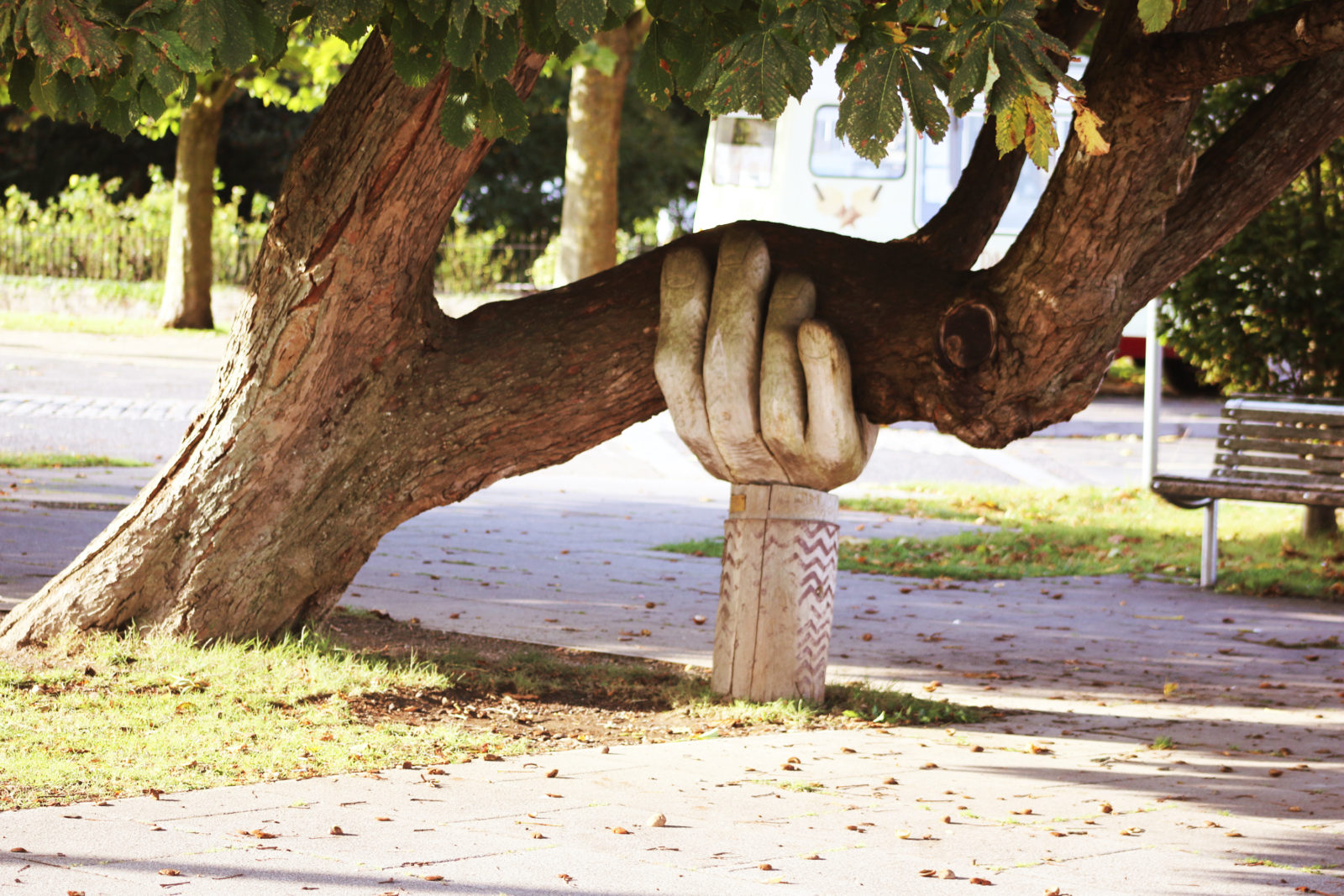The goal of living a discerning life is to avoid being deceived. That’s our challenge and that’s our hope. By learning to apply biblical discernment, we can protect ourselves, our families, and our churches. And the first step in that process is to recognize the pattern of deception.
The First Step of Deceit
Opportunity is the first step of deception. There has to be the chance to trick, convince, or lead someone astray, or it would never happen.
But the fact is, even if we only read Christian books, and hang out with Christian people in Christian environments, and only listen to Christian podcasts and Christian songs on the radio, we can still be deceived.
Deception happens whenever our minds are led away from the truth of Scripture. We come to believe something (an idea, conclusion, argument, or message) that is not true, and then we act in accordance with that belief. That’s why deception is so dangerous: what we think always affects how we act.
Sometimes these opportunities to deceive happen when a speaker or writer or social influencer pied-pipers us away. They might come in a meme, a book, a movie, or a song. Most dangerously, it’s entirely possible for us to deceive ourselves.
Staying Aware
Truly, the chances of us being deceived are everywhere. Literally. Every day we face many opportunities to slip off the path of truth. That is a fact.

But we also can’t hide away in some corner. God has called us to be in the world and live in community and walk alongside our neighbors.
So we cannot hide. We just have to be on guard. We cannot avoid the opportunities for Satan, the world, and our sin nature to tempt us away. And that’s okay. Because God has also provided everything we need to prevent ourselves from running off after them.
It’s just that we must always be aware.
Genesis 3
Because in Genesis 3, the biblical heart of the idea of deception, we see what happens when we are not on guard.
Now the serpent was more crafty than any other beast of the field that the LORD God had made. He said to the woman, "Did God actually say, 'You shall not eat of any tree in the garden'?" 2 And the woman said to the serpent, "We may eat of the fruit of the trees in the garden, 3 but God said, 'You shall not eat of the fruit of the tree that is in the midst of the garden, neither shall you touch it, lest you die.'" 4 But the serpent said to the woman, "You will not surely die. 5 For God knows that when you eat of it your eyes will be opened, and you will be like God, knowing good and evil." 6 So when the woman saw that the tree was good for food, and that it was a delight to the eyes, and that the tree was to be desired to make one wise, she took of its fruit and ate, and she also gave some to her husband who was with her, and he ate. 7 Then the eyes of both were opened, and they knew that they were naked. And they sewed fig leaves together and made themselves loincloths.
We know this story. We’ve heard it hundreds of times. And it is central to our understanding of sin, God’s grace, and humanity’s fall. But it also provides us a pattern for recognizing deception when it slithers its way toward us.
The Pattern of Deception
Three things happen in this passage. Three decisions. Three keys come into play and, all combined, they result in the woman’s deception. If any one of them had been addressed correctly (or at all), the end result could have been much different.
What are they?
- A Seed of Doubt
- A Sloppy Handling of God’s Word
- An Unquestioned Set of Criteria
First, there was a seed of doubt. The serpent didn’t come to the woman with direct accusations about God. He didn’t try to blame God for something or challenge her experiences. He just asked her a question. But the intent of that question was to make the woman wonder about God, about who he claimed to be and what he claimed to offer them.
He planted a seed of doubt in the woman’s mind, and then left it alone to do what seeds always do—put down roots and grow. Which is exactly what it did.
The Rest of the Pattern
Second, she handled the Word of God sloppily. God told the man the rule about the tree. The woman had heard the rule, as far as we know, from the man. But her version of the rule sounded different than God’s version of it.
Her version: God said, 'You shall not eat of the fruit of the tree that is in the midst of the garden, neither shall you touch it, lest you die.'"
God's version: "You may surely eat of every tree of the garden, but of the tree of the knowledge of good and evil you shall not eat, for in the day that you eat of it you shall surely die." (Genesis 2:16–17)
She wasn’t entirely off. All the big ideas were there. The problem is that she wasn’t careful with God’s word. She wasn’t specific. She added more things God didn’t say. And she was fuzzy on the consequences God had specifically stated. Her handling of God’s Word was sloppy, and it set her up for being deceived.
And finally, she used an unquestioned set of criteria. She looked at the tree and actually considered why she might or might not eat from it. And her criteria aren’t bad ones: the tree was good for food, and that it was a delight to the eyes, and that the tree was to be desired to make one wise.
Heavens, she evaluated the fruit of that tree as being useful, beautiful on the outside, and effective on a deeper level. These are good criteria, ladies. The problem, though, is that they weren’t true.
They didn’t lead her to truth; they led her away from it. She already had the answer (“God said no”), but it wasn’t as important as her criteria. She didn’t question her reasoning. Adam didn’t challenge her use of these criteria. She treated them as true, when they were really her workaround for the truth.
The Same Path
We take workarounds, too. And they’re just another name for deception.
The woman had a seed of doubt, a sloppy handling of Scripture, and an unquestioned set of criteria. And when she made her decision, she chose wrong.
It’s the same for us. We cannot avoid the opportunities, but we can recognize the pattern of deception.
Despite what some people think, it’s not a problem to doubt. We can question, but we have to be honest about our questions. And we have to get our answers from God.
We have so many way to access God’s Word, but we often handle it sloppily. This is why I’m so passionate about helping people know and understand the Bible. We have to get anchored in the Bible so we don’t slip off the path.
And we have to stop assuming that our reasons for choosing are the same as truth. Good criteria can still lead us to bad choices. This is why we need to ask questions. They keep us from accepting blindly what is only going to lead us astray.
The pattern of deception is easy to spot if you know what you’re looking for. Let’s start looking for it. Because you don’t have to fall for it any more.



